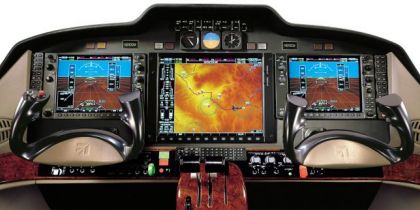Avionics
Avionics systems carry out control and safety tasks in aircraft. They are also used for cockpit, cabin and supply systems. Depending on the use of the aircraft there are other systems supporting the pilot.
Apart from functionality, reliability and safety are core requirements for each avionics development. This also applies to the electronics and software components employed. For the system architecture this leads to a distribution of hardware / software solutions, which are usually carried out redundantly at the high design assurance level (DAL A and B) and which must meet high standards and guidelines. DO-178 for Avionics software and RTCA/DO-254 for avionics hardware are the most commonly known standards.
Standards conformity
We work to the following standards
- DO-178 „Software Considerations in Airborne Systems and Equipment Certification“
- DO-254 „Design Assurance Guidance for Airbourne Electronic Hardware“
- ARP4754 „Aerospace Recommended Practice“
- IEC 61508 „Functional Safety of Electrical/Electronic/Programmable Electronic Safety-related Systems”
Software development process
As a service provider we support you during all phases of your software development process. Our employees are highly experienced in all fields relating to the software development process for your specific Avionics applications, aligned to the required Design Assurance Level, starting with setting up of requirements (Requirement Engineering) and by defining suitable architectures and designs, source code analyses, the various test stages and also drawing up a suitable verification and validation strategy. To us it does not matter whether your development process is based the waterfall model, the V model or an agile development approach (e.g. SCRUM). We are familiar with all of them.
Code review incl. static code analysis of software conforming with DO-178
To check whether the requirements set out by DO-178 are met, reviews are carried which are aimed at proving that the software modules cover the requirement and design stipulations. Furthermore, by using corresponding code coverage analyses the different levels the code covers are measured using tests and reviews, and traceability to the test cases is checked. Worst case runtime analysis (WCET analysis) and floating point error analysis are further processes used to provide evidence for the quality of a code. Of course we consider your internal coding standards.
RAMS-Process
Our RAMS experts will develop a RAMS process in cooperation with you will integrate and implement the individual RAMS activities within the respective project phases.
We have extensive experience in the application of established RAMS methods and techniques. These include:
- Failure modes and effects analysis (FMEA)
- Failure modes, effects and criticality analysis (FMECA)
- Fault tree analysis (FTA)
- Hazard Identification (HAZID)
- Hazard and Operability (HAZOP)
We choose the RAMS processes suitable for your needs and implement them in line with the specific requirements, accompanying the development. Thus we ensure that RAMS becomes an integral part within your software development process.
Verification and Validation
Especially with regard to verification and validation we are your competent partner. We have several years of experience in verification and validation of diverse avionics specific applications. In cooperation with you we will set up the optimum verification and validation strategy. We will also practically support you in implementing this within the projects.
Reference Project
Process and document monitoring of a supplier
As part of the production of the worldwide largest passenger aircraft, the A380, a DAL B software development tool was used to configure and secure electronic loads in cabin (ATA Chapter 24). We were instructed by the aircraft manufacturer to carry out the software process assurance for a supplier and our employees carried out this duty in line with DO-178. The tasks carried out included:
- Review of software specification and software architecture
- Review of software development and test plans
- Consulting on and agreeing of the software tool qualification (drawing up the chain of evidence und setting up the necessary verification actions)
- Carrying out and evaluating software reviews.


